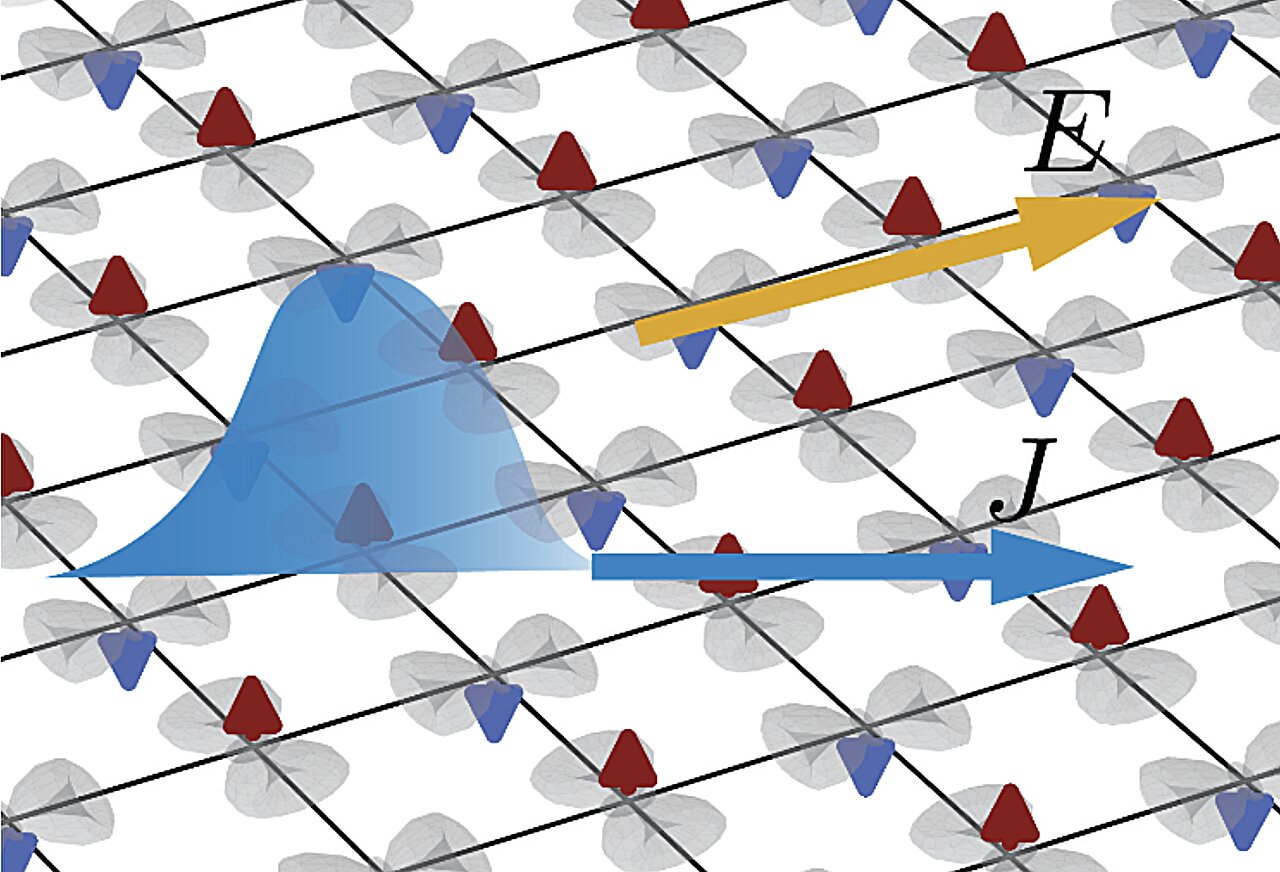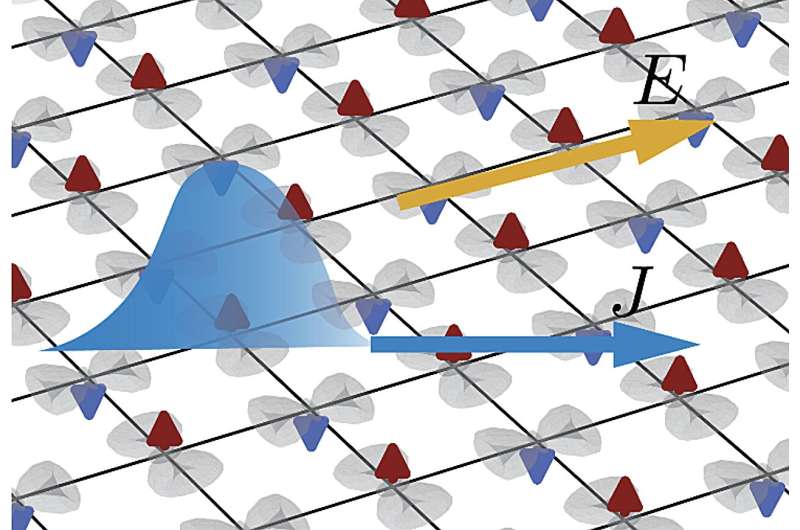

In recent years, many physicists and materials scientists have been studying a newly uncovered class of magnetic materials known as altermagnets. These materials exhibit a unique type of magnetism that differs from both conventional ferromagnetism and antiferromagnetism, marked by electrons whose spin varies depending on their momentum.
This unique magnetism makes altermagnets highly promising for the development of new spintronic and electronic devices. It also opens new possibilities for the study of topological materials (i.e., systems with unique electronic properties originating from their electronic structure’s topology).
Researchers at Stony Brook University carried out a study aimed at better understanding the nonlinear response of planar altermagnets. Their paper, published in Physical Review Letters, reports the observation of a non-linear response in these materials derived from their quantum geometry.
“Recently, two experiments have confirmed the predicted role of quantum geometry in the second-order response of the conventional PT-symmetric antiferromagnets,” Sayed Ali Akbar Ghorashi, co-author of the paper, told Phys.org.
“In these materials, due to the combination of parity (P) and time-reversal (T) symmetries, the Berry curvature (the imaginary component of quantum geometric tensor) vanishes, and it is shown that the second-order response is governed by the quantum metric (the real component of quantum geometric tensor).”
Altermagnets lack the combined PT symmetry. As a result, the influence of quantum geometry on the nonlinear response reported in these materials remained elusive.
“The goal of our work was to derive the nonlinear response of altermagnets and distinguish the contributions from the Berry curvature and from the quantum metric,” said Ghorashi. “Our findings ended up being more dramatic than anticipated.”
Originally, Ghorashi and his colleagues set out to investigate the nonlinear response of altermagnets and factors driving this response. To do this, they first computed all contributions to the nonlinear response of altermagnets up to the third order in electric field, using semiclassical Boltzmann theory.
“We uncovered the quantum geometric origin of each term order by order in scattering time,” said Ghorashi. “Next, for each planar altermagnet, we used symmetry to determine which contributions survive in the longitudinal and Hall components of the third-order conductivity.”
The calculations and analyses carried out by the researchers yielded surprising and insightful results. Specifically, they identified non-linear responses in planar altermagnets that are induced by the materials’ quantum geometry.
“Remarkably, due to inversion symmetry, altermagnets have vanishing second-order response,” explained Ghorashi.
“Therefore, to the best of our knowledge, they are the first class of materials where the third-order response is their leading nonlinear response. Furthermore, we showed this response is giant due to the large spin-splitting in these materials. Moreover, the weak spin-orbit coupling (compared to magnetic exchange term) of altermagnets also shows up in their non-linear response, providing a novel transport characterization for this new class of materials, which was previously limited to searching for linear anomalous Hall conductivity.”
The results of this recent study open new possibilities for the study of altermagnets and their unique properties. Most notably, it uncovers distinctive features of nonlinear transport in this newly discovered class of materials, which could guide future experiments aimed at further examining them and delineating various aspects of their quantum geometry.
“One immediate future research direction for us will be to go beyond the relaxation time approximation and investigate the effect of disorder which has already been shown to enrich the physics of PT-symmetric antiferromagnets,” added Ghorashi.
More information:
Yuan Fang et al, Quantum Geometry Induced Nonlinear Transport in Altermagnets, Physical Review Letters (2024). DOI: 10.1103/PhysRevLett.133.106701. On arXiv: DOI: 10.48550/arxiv.2310.11489
© 2024 Science X Network
Citation:
Physicists reveal nonlinear transport induced by quantum geometry in planar altermagnets (2024, October 11)
retrieved 11 October 2024
from https://phys.org/news/2024-10-physicists-reveal-nonlinear-quantum-geometry.html
This document is subject to copyright. Apart from any fair dealing for the purpose of private study or research, no
part may be reproduced without the written permission. The content is provided for information purposes only.